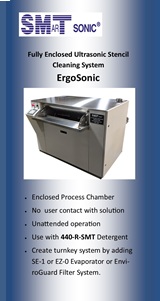|

|
|
| Ask the Experts | |||||||
|
|||||||
|
August 12, 2025 - Updated January 29, 2014 - Originally Posted ESD Conductive Floor Tile WorryWe build AC power supplies and have up to 800V DC voltage sources. I worry that purchasing a 104 to 106 ESD conductive floor tile may be too conductive for a potential 60mA current finding a path to ground through the ESD flooring and/or a person touching both the conductor and the floor. Granted 60mA is not much, but it can cause significant issues for other reasons.However, if we install a 106 to 109 dissipative floor tile system, it may exceed the ANSI/ESD S.20.20 requirements of less than 35x106 Ohms. We will still need static protection because the control circuitry is static sensitive and low voltage.Would we be better to get the higher ohm floor tile for the greater protection,or go for the more common (cheaper) conductive floor tile. Am I over thinking this issue, or do I have a valid worry. L.M. |
|||||||
| Expert Panel Responses | |||||||
|
If the worst case is defined as 10^4 (10k) ohms from source to ground, then there is most definitely a concern, as you could be passing 80mA of current. You probably do not have this worst case, however. If we assume that the resistance through the operator is negligible (they are directly contacting the 800V source), the path still needs to go through whatever footwear they are wearing and then through the floor tile. You can add a level of safety by ensuring that footwear used is in the "dissipative" range. You could also use higher-resistance dissipative mats over the floor tile in areas where high voltage is present, which should be limited to check-out and troubleshooting of built-up product.
Process Engineer Astronautics Fritz's career in electronics manufacturing has included diverse engineering roles including PWB fabrication, thick film print & fire, SMT and wave/selective solder process engineering, and electronics materials development and marketing. Fritz's educational background is in mechanical engineering with an emphasis on materials science. Design of Experiments (DoE) techniques have been an area of independent study. Fritz has published over a dozen papers at various industry conferences.
I have been involved in specifying, installing, and verifying conductive ESD floor tile in several high reliability manufacturing areas. I believe you may be confusing two different conductivity specs in your analysis. There is a static dissipation across the surface of the floor tiles and there is a static conduction to ground through the floor tiles. Good quality ESD floor tiles should be applied with a conductive adhesive and copper foil grounding strips to facility ground. This means that a current, following the path of least resistance, would go through the conductive flooring, to the conductive adhesive, to the copper foil, and to the facility ground. That specification should be around 10E5 to 10E7 ohms. The surface resistivity test takes 2 electrodes spaced a known distance (I believe 12 inches) and applies a voltage across the two and measures surface resistivity. This is done in an area away from the copper grounding strips. Now, here are some precautions that you should take in setting up the people and equipment around your facility. People should have heel grounders or conductive shoes with a resistance of at least 250K ohms but preferable 1 megohm. Carts, shelves, and other metallic desks, must be INSULATED from the conductive floor, and only in contact with ground through a 250K ohm resistor to ESD ground. If you do not isolate the feet of shelves and desks, you will find that Raoults Law has prevailed and the effective resistance is much lower than you anticipated. 1/RT = 1/R1 + 1/R2 +1/Rn ... This is very important. All ESD bands must be grounded through an electrical resistor, generally a 1 watt, 250K ohm.Possibly, these days, the equipment already contains the needed resistance; you should check it out. As for the floor ... you will need to use a conductive wax. We tried for years to simply use soap and water, or buffing compounds, but they could never get a nice finish. The conductive waxes, on top of the ESD floors, will protect the floor and it should last for many years. Be careful to not use the standard ESD tiles in areas exposed to solvents. The solvents will eat up the standard ESD tiles. I hope this wasn't too much of a shock! Ha!
President Chem Logic Rick Perkins is a chemical engineer with more than 33 years of Materials & Processes experience. He has worked with Honeywell Aerospace in high-reliability manufacturing, as well as with several oil-field manufacturing companies. He also has a good understanding of environmental, health, and safety regulations.
Any time there is a high voltage situation the operator should be isolated/insulated from the potential to be the path to ground. I would utilize isolated (resistive) table & floor mats. The operator should in no way be part of the path to ground. As for the ESD control of the sensitive control device I would suggest the use of an ionizer to neutralize any potential charges that could build up.
President JSK Associates Based in. Northern California since 1971. Founded JSK Associates in 1979. Actively involved in soldering, cleaning, chemistries. 30 years experience in EOS/ESD control.
|
|||||||
| Submit A Comment | |||||||
|
Comments are reviewed prior to posting. You must include your full name to have your comments posted. We will not post your email address. |
|
Free Newsletter Subscription
Circuitnet is built for professionals who bear the responsibility of looking ahead, imagining the future, and preparing for it. Insert Your Email Address |
|

|





